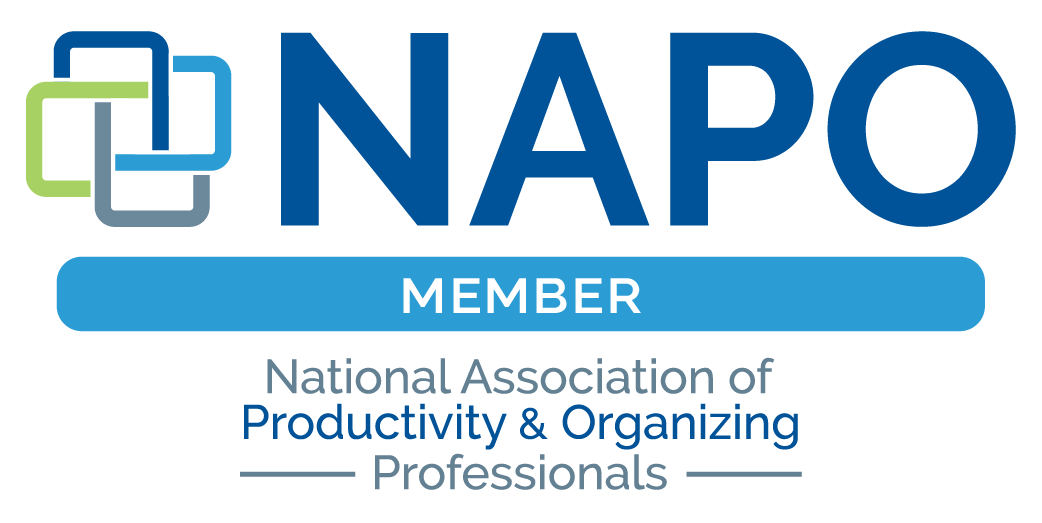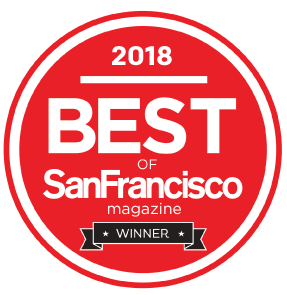An internal dance of joy leapt within me when I read the following line in Green Washed: Why We Can’t Buy Our Way to a Green Planet by Kendra Pierre-Louis:
While we need to be more conscious about what and how much we choose to consume, that consciousness is a starting point, not an end point.
This quote was the perfect finale for my presentation on a panel about environmentally conscious organizing at this year’s NAPO2013 conference. I was thrilled to be one of three ECO organizers speaking on a topic so near and dear but more so about spreading ideas that I hope will help create ripples of awareness and change in an industry of individuals who routinely find themselves on the front lines of communicating with people about stuff and the choices we make as consumers.
My talk focused on conscious consumption and addressed how we can begin to make more mindful decisions because our choices and habits as consumers ultimately affect our actions when we’re standing in front of our trash and recycling bins. I identified and spoke about the following six practices that can help all of us begin to slow down and think before we buy. Of course, this is specifically targeted to those moments when we “have to” buy, and that’s a whole other discussion for another time!
BE WILLING TO LEARN A NEW LANGUAGE
For a majority of consumers who want to make the healthiest choice for themselves and their families, it’s important to learn how to read between the lines and begin to understand what the descriptions on product labels and websites are really telling you.


For example, did you know the terms environmentally safe, green, eco-friendly & natural have been so overused and diluted that the Federal Trade Commission (FTC) considers them to be too vague to be meaningful? So what’s a consumer to do?
- Keep an eye out for environmentally nutritious words like post-consumer content, biodegradable, chlorine-free, formaldehyde-free, organic, and compostable for which the FTC has rules and regulations that govern what they mean. Start learning what they really mean.
- Begin to understand what ecolabels are telling you. Ecolabels are logos that rather than representing a corporate entity, convey information about how responsibly things are made, the social or environmental impacts of a company or product, corporate transparency and accountability, a product’s life-cycle, and even how something should be disposed of.
If you’re new to this, trust me when I say there’s going to come a time when ecolabels plus an mix of those eco-happy words will be more meaningful to you than the brand names of the products you’re buying!
BE AWARE OF GREENWASHING
Very simply put, greenwashing is the marketing spin or veneer that makes a company or product seem environmentally concerned. As consumer demands for “greener” products has increased, unfortunately, too, so has the practice of greenwashing.
When it comes to greenwashing, my rules of thumb are to watch for excessive use of the word “green” (and the other words that are unregulated by the FTC) and the absence of proof of claims on a company’s website or a product’s label.
One of my favorite examples of greenwashing is a product that tries to tell me, the consumer, to “be green” when the product itself isn’t.
 Eco not-so-fun fact: Did you know that 30 million plastic bottles end up in landfill each day and that only 5% are recycled in the US? Yep, that includes even the alleged greener ones!
Eco not-so-fun fact: Did you know that 30 million plastic bottles end up in landfill each day and that only 5% are recycled in the US? Yep, that includes even the alleged greener ones!
LET YOUR INNER SKEPTIC GUIDE YOU
You’re probably wondering how on earth, with all the greenwashing and overabundance of choices, can one find truly good and sustainably created or sourced products. I’m the first to admit that it can be challenging, and when in doubt, or when something sounds too good to be true, I encourage you to let your inner skeptic do some research and ask questions.
A true story: When I first heard about DITTO Hangers, I visited the company’s website with lots of skepticism leading the way.
I clicked from page to page to page devouring all the content while looking for vagueness and questionable information. Instead, I was met with a venue loaded with information and environmentally appropriate and convincing language that dissipated any question of the product’s environmental authenticity. I was so impressed, I wanted to obtain samples for a talk. A brief email to the company (conveniently located just across the San Francisco Bay in Oakland, CA) led to a response from and a meeting with Gary Barker, Ditto’s CEO, and my wish was granted.
CHOOSE THE PATH OF LESS PACKAGING
This is where things can get a little radical and mindfulness is paramount. Whenever you possibly can, choose items that do not come with packaging or if they do have packaging, choose those with packaging that can and will (ahem) be placed in your local recycling stream. By reusing your own containers when purchasing grains, beans, herbs, olive oil, peanut butter and even chocolate chips from a well-stocked bulk section of a grocery store, you bypass unnecessary packaging that will ultimately become some form of waste.

It even works for office supplies, if you can find a store that sells items individually without packaging…

When you do have to purchase packaging along with the thing, I encourage you to focus on choosing products where the packaging can and will go into the recycling stream as this keeps valuable resources in the economy. One example: the plastic-free boxes of pencils at the bottom of the photo above.
Another eco not-so-fun fact: Did you know that approximately twenty-five percent of landfill content in the U.S. is product packaging?
CHOOSE QUALITY OVER QUANTITY
Learning to “just say NO” and resist buying more because it’s cheaper is a lesson in restraint. More is often overwhelming and creates waste, storage challenges, and clutter which then triggers the desire to buy more to make it right. It can be a vicious cycle.
In many instances, the less you have, the easier it is to manage. How to do this? Acquire only what you need. Choose quality items – those that are timeless and versatile, have longevity and reduce the need to be replaced with frequency, and can easily be repaired – over the quantity of items.
CONTINUE TO PRACTICE AND TO EDUCATE YOURSELF
Learning anything new takes time, and with time, you will begin to make better choices. None of us can be perfect from step one. It’s unrealistic. Start with what works for you. Where are you most curious? Where can you dip your toe to begin making one change of practice to see what it feels and looks like? Chances are it will be a little uncomfortable at first, but as is the case with anything new, you’ll get used to it.
In a marketplace filled with too many choices your choices get narrowed down right away when you start consuming with a greater consciousness and attention to detail. What you’ll find that all these practices add up to a classic case of “less is more.”
End note: No single-use plastic water bottles were purchased in the production of this post.







Deb, congrats on your talk! And thanks for breaking it all down into manageable pieces for us.